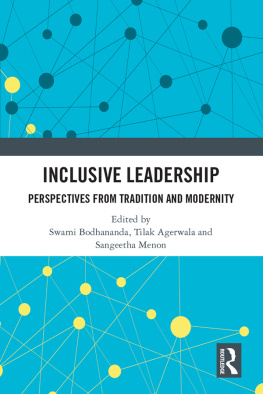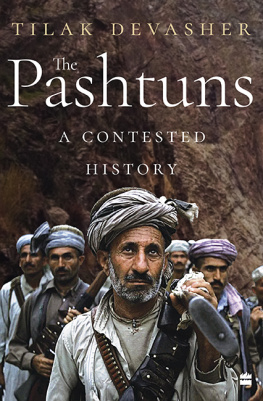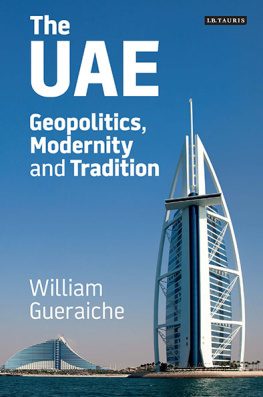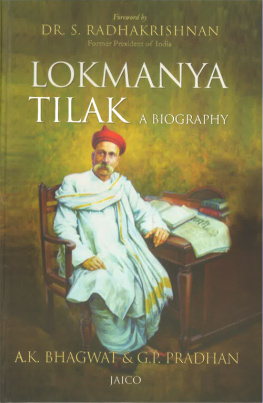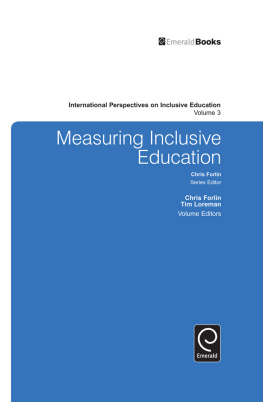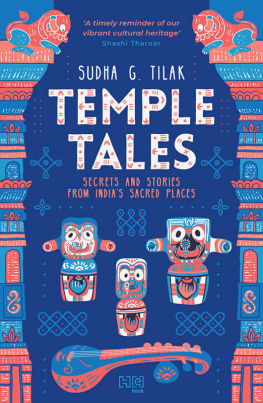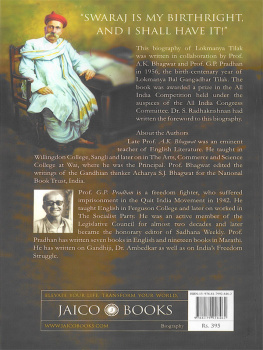Agerwala Tilak - Inclusive leadership : perspectiives from tradition and modernity
Here you can read online Agerwala Tilak - Inclusive leadership : perspectiives from tradition and modernity full text of the book (entire story) in english for free. Download pdf and epub, get meaning, cover and reviews about this ebook. City: India., year: 2020, publisher: Routledge, genre: Romance novel. Description of the work, (preface) as well as reviews are available. Best literature library LitArk.com created for fans of good reading and offers a wide selection of genres:
Romance novel
Science fiction
Adventure
Detective
Science
History
Home and family
Prose
Art
Politics
Computer
Non-fiction
Religion
Business
Children
Humor
Choose a favorite category and find really read worthwhile books. Enjoy immersion in the world of imagination, feel the emotions of the characters or learn something new for yourself, make an fascinating discovery.
- Book:Inclusive leadership : perspectiives from tradition and modernity
- Author:
- Publisher:Routledge
- Genre:
- Year:2020
- City:India.
- Rating:4 / 5
- Favourites:Add to favourites
- Your mark:
- 80
- 1
- 2
- 3
- 4
- 5
Inclusive leadership : perspectiives from tradition and modernity: summary, description and annotation
We offer to read an annotation, description, summary or preface (depends on what the author of the book "Inclusive leadership : perspectiives from tradition and modernity" wrote himself). If you haven't found the necessary information about the book — write in the comments, we will try to find it.
Agerwala Tilak: author's other books
Who wrote Inclusive leadership : perspectiives from tradition and modernity? Find out the surname, the name of the author of the book and a list of all author's works by series.
Inclusive leadership : perspectiives from tradition and modernity — read online for free the complete book (whole text) full work
Below is the text of the book, divided by pages. System saving the place of the last page read, allows you to conveniently read the book "Inclusive leadership : perspectiives from tradition and modernity" online for free, without having to search again every time where you left off. Put a bookmark, and you can go to the page where you finished reading at any time.
Font size:
Interval:
Bookmark:

Inclusive Leadership
Swami Bodhananda, Tilak Agerwala and Sangeetha Menon
Distinct from the classical approaches to understanding the mind from a single disciplinary point of view, contemporary approaches in science, philosophy and psychology adopt an interdisciplinary approach. This concept of leadership is central in understanding the human mind, since it brings in the nature of social interactions as well as the contours of the self and identity that one forms through interactions and social living. Further, in present times, the challenge in leadership studies is to account for the possibilities that are extended by attitudes and approaches of the leader in terms of considering multiple factors in decision making and team building. Thus, inclusivity is central.
Significant perspectives on inclusivity and inclusive approaches in leadership can be traced back to Kautilyas philosophy. The rajarshi model of leadership for contemporary world was enunciated by Kautilya, the prime minister of Chandragupta Maurya, (321297 BC), the first known emperor in the Indian subcontinent, who ruled a vast swath of land from his capital at Pataliputra, present-day Bihar. The word raja signifies power and the word rishi denotes wisdom. Rajarshi, a compound of these two words, denotes a wise king or a thoughtful leader. This reminds one of Platos idea of a philosopher king or the Confucian concept of a virtuous leader. Kautilya was a stellar political thinker of ancient India, with the single-mindedness of a Machiavelli, the strategic thinking of a Sun Tsu and the public spirit of a Confucius all rolled into one. He stipulated praja sukham (citizens well-being) as the goal of the state and defined national wealth as manushyavati bhumi arthah (a result of human effort applied to natural resources).
The concept of Rajarshi in juxtaposition with the idea of inclusive leadership offers a space to understand group and individual psychology of social interactions both from traditional and modern perspectives. The chapters in this book excavate ancient Indian wisdom for ideas and concepts for modern leadership practices. Hence the title of this volume, Inclusive Leadership: Perspectives from Tradition and Modernity .
The goal of focusing on the Rajarshi model in the context of inclusive leadership is to contribute constructively towards the development of a comprehensive management and leadership model for emerging India, the largest democracy and the third-largest Asian economy, which is expected to grow to be the second- or third-largest economy in the world by 2050. The challenge for India is to achieve within the framework of democracy, pluralism and political freedom what China has achieved through ruthless, authoritarian one-party rule. India could be a shining example for freedom and prosperity for the rest of the world if this feat can be pulled off in the foreseeable future. Indias success in economic development will be hailed as the success of democracy, rule of law and freedom. And the Indian model of development could be replicated in developing countries with democratic values; here lies the importance of this exercise in model building.
What emerge from the chapters are five foundational principles which can undergird modern leadership. First, individuals are essentially spiritual beings with an indivisible self at their core, hence, personal integrity and moral and ethical behaviour in public conduct alone can ensure general well-being. Second, progress of humanity will not be complete without incorporating feminine perspectives in the decision-making process. Third, the process of decision-making should also involve multiple voices and the interests of all stakeholders, including the marginalized sections of society. Fourth, environmental considerations are critical in leadership decisions and policy choices. Finally, leadership in future would be a combination of computer power and human intelligence. These five principles lead to a system of dispersed, decentralized and nested leadership where the leader will not be a person, but a presence; not a face, but a space; not an authority figure, but a facilitating coach; not a source of power, but a point of inspiration; not a commissar, but a yogi.
The philosophical foundation of inclusive leadership envisaged in this book is advaita vedanta as enunciated by Swami Bodhananda in his article which introduces advaita vedanta as a metatheory. Advaita is the quintessential wisdom of India, a philosophy that propounds consciousness as the source of individual awareness and the manifested world. The oneness that advaita proposes has vertical and horizontal dimensions. Vertically it sees individuals as a combination of body, mind and consciousness and horizontally individuals are inalienably related to family, community, culture, environment, and the whole evolutionary process. He disputes the notion of matterconsciousness divide and propounds a seamless reality in which matter and consciousness are presented as two expressions of the same phenomenon. Swami Bodhananda questions the prevalent notion that advaita vedanta is otherworldly and establishes with textual references and epistemological instances cited from the vedanta and by its well-known practitioners that this system of Indian philosophy advocates common good through reflective action and detached engagement in the world. Such an inclusive psychology is analysed by Sangeetha Menon in the context of the philosophical and management underpinnings of desire, human action, agency, and common good in her chapter describing the manner in which the model of transcendental leadership has been developed by Swami Bodhananda. This analysis is intended to give an alternate approach to understand the fundamental notion and experience of well-being in comparison to the other models in vogue.
The chapter by R. Narayanan takes up the leads from Swami Bodhanandas arguments and explains the core concept of Rajarshi model of ancient Indian wisdom as cognisance of unlimited individual potential energy and its conversion to kinetic energy through dedicated work in order to promote public good. With the help of systems thinking, a holistic perspective and deep strategy to the idea of inclusive leadership is suggested in this chapter. The chapter on leadership principles from yoga by Shriram Sarvotham connects Aristotelian concepts of ethos, logos and pathos to the ashtanga yoga concept focusing on the leader as a person who brings value to the practice of leadership. A perfect harmony of values, reason and compassion makes the leader ethically rooted, rationally clear headed and emotionally balanced and empathetic. This inspires the call for a change of heart, recalling Gandhi as the panacea for the crises in contemporary leadership challenges.
Continuing the excavation into Indian wisdom tradition, the chapter by Radhakrishna Pillai, focuses exclusively on Kautilyas description in Arthashastra of an ideal king. Indriya jaya (sense control) is the key to mastery of self and the art of leadership. The king should be trained in the oughts and ought nots of leadership. Self-control means overcoming weaknesses and excesses like lust, anger, pride, arrogance, and foolhardiness. Twenty-one reasons are enumerated for the downfall of a leader. Personal duplicity and unethical business practices of chief executives of big corporations and banks which led to the economic meltdown in 2008 is reminded in the chapter, appealing readers to rethink and go back to the practice of traditional concepts of morality and ethics in personal and public life.
From the sphere of philosophy, moral imperatives and prescriptive ethics, a section of chapters in this book turn the discussion to sociopolitical, cultural and economic issues and critical analysis for leadership insights. The lead in such a perspective is made by the chapter by B.P. Mathur. Analysing the works of economists like Joseph Stiglitz, Jeffrey Sachs and Thomas Piketty, he pointedly critiques modern economic thought and practices, the mindless materialistic pursuit of profit, money and wealth that leads to soulless consumerism, environmental degradation and dangerous levels of income inequalities. He highlights the failure of both socialist and free market systems and looks for the right economic model. This chapter depicts a protest on the tendency to equate free-market globalization and the Indian concept of vasudhaiva kutumbakam (world as one family). Free market leads to competition, rivalry and conflict, whereas world as one family is about love, harmony, cooperation, and mutual support based on self-imposed control, equitable sharing of resources and taking care of every member of the society. This chapter offers a response to the modern paradox of afflictions of affluence in focusing on morally integrated individuals organized in an ethically bounded economy led by spiritually inspired leaders. Such a response is grounded by the author with extensive literature from the Mahabharata and Arthashastra.
Font size:
Interval:
Bookmark:
Similar books «Inclusive leadership : perspectiives from tradition and modernity»
Look at similar books to Inclusive leadership : perspectiives from tradition and modernity. We have selected literature similar in name and meaning in the hope of providing readers with more options to find new, interesting, not yet read works.
Discussion, reviews of the book Inclusive leadership : perspectiives from tradition and modernity and just readers' own opinions. Leave your comments, write what you think about the work, its meaning or the main characters. Specify what exactly you liked and what you didn't like, and why you think so.

